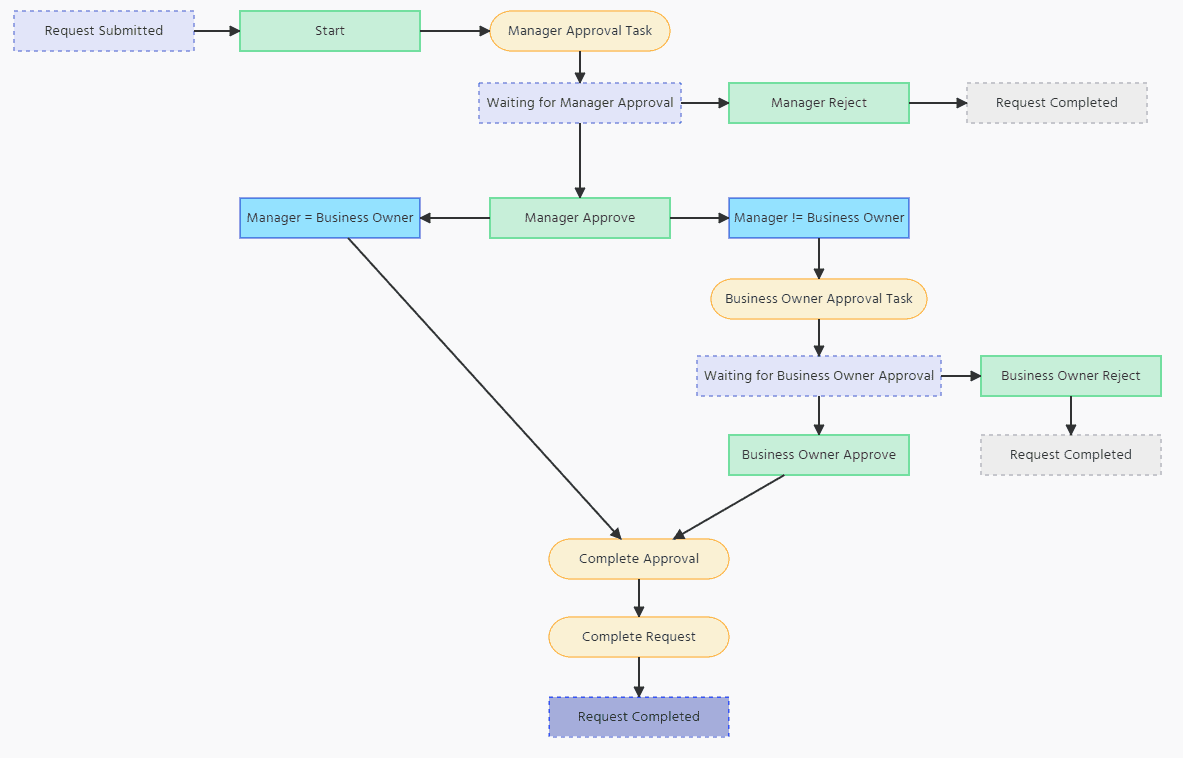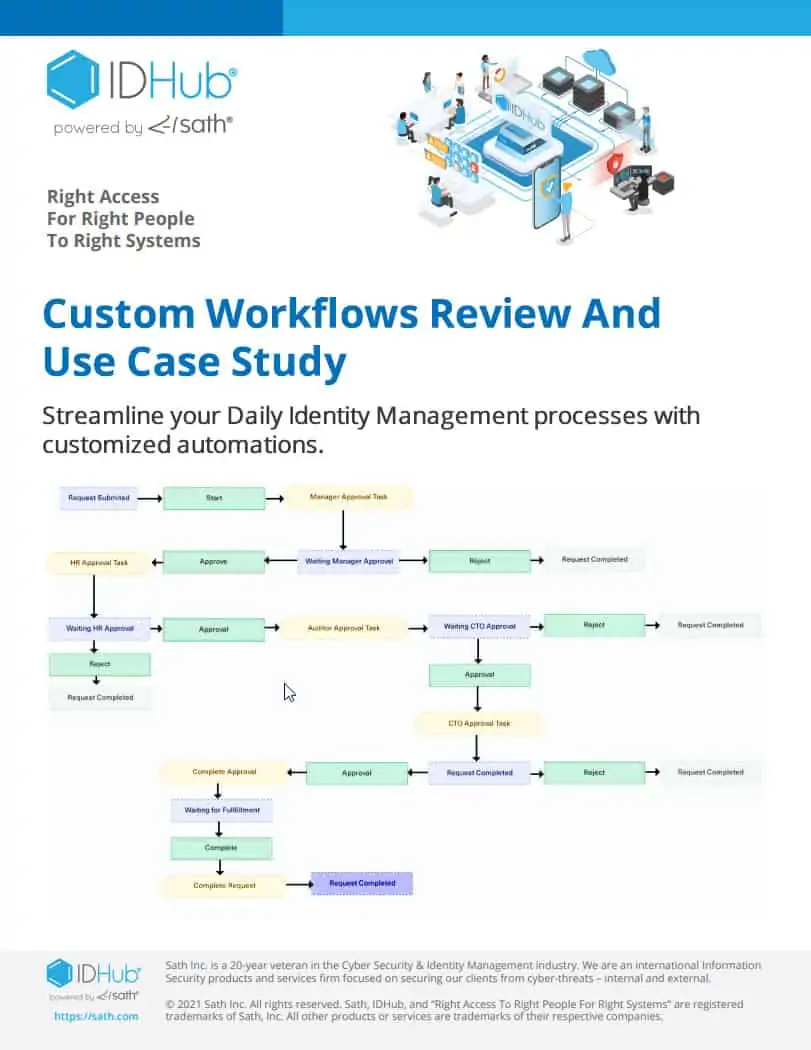
IDHub Workflow Guide
GET MY COPY
Customizable Workflow Engine
As businesses expand with more applications and users, processes and requirements regarding access, entitlements, roles, and governance, become more complex and involved.
Creating unique customized processes to optimize integrations and manage compliance, is critical to operating efficiently and successfully.
Businesses and IT teams are increasingly looking for future-proof, reliable solutions that demand fewer resources from already overburdened IT teams.
Identity Solutions must provide consistent security accuracy, while being agile enough to add flexibility to change when your business changes, at a moment's notice.
7 Elements Of Successful Workflows
Effective Identity Workflows, need to include several key factors to provide the highest success for your team:
- Connect to every part of your solution.
- Easily customizable to your changing requirements.
- Create clear visibility into the logical processes.
- Identify errors, and perform stopgap measures.
- Provide a simple interface that non-technical users can utilize, to create valuable workflows.
- Provide a sophisticated structure that allows for customized, complex written logic to be applied.
- Provide clear direction and debugging steps, to correct any potential conflicts.
Tips For Better Workflows
Keep your workflows simple, include the minimum required functionality, without over complicating things.
- Understand your employee's behavior and day-to-day challenges.
example: using a spreadsheet or an email for access. - Simplicity is key, so reuse as much as you can, and beware of
over-customizing. - When creating a new workflow, copy-paste an existing workflow, and make edits to your unique workflow.
- Customize IDHub with your branding to encourage employee adoption, and engagement.
- Resist the urge to add multiple forms and API integrations unless necessary.
- Send notifications strategically.
Workflow Use Case Scenarios
Multi-Layer Approval Workflow
A particular application within an organization will require the following approval process, before provisioning access to the requestor:
- The user's direct manager must approve
- An HR representative must approve
- An auditor must approve
- A CTO must approve
Each task creates an Operation Node that will provide an option to add actions within it. Action Nodes are used to progress further in the flow.
Example: “Create Manager Task” will have two actions: Manager Approve and Manager Reject. The flow will then proceed with different Action Nodes, which will have a flow of their own.
Each State Node is capable of having a resolution attached to it.
Example: Request Completed can have a “Success” or “Rejected” resolution.

Bypassing Approvals
If an approver has already approved a previous approval task, the workflow will skip the next approval task.
A check is made to determine if the first approver has the same Role as the second approver. If so, this
step is skipped.
JavaScript within the Condition Nodes:
- Name: Manager != Business Owner
- Condition to enter : return requestObject.beneficiary.managerLogin !==entity.businessOwner
- Name: Manager = Business Owner
- Condition to enter : return requestObject.beneficiary.managerLogin ===entity.businessOwner
E.g. “Request Completed” can have a “Success” or “Rejected” resolution.

Want to learn more about IDHub Workflows?
Check out our IDHub Workflows page to learn more the many out-of-the-box workflows included with a license, and how easy it is to customize any flow you need, with no technical experience.
